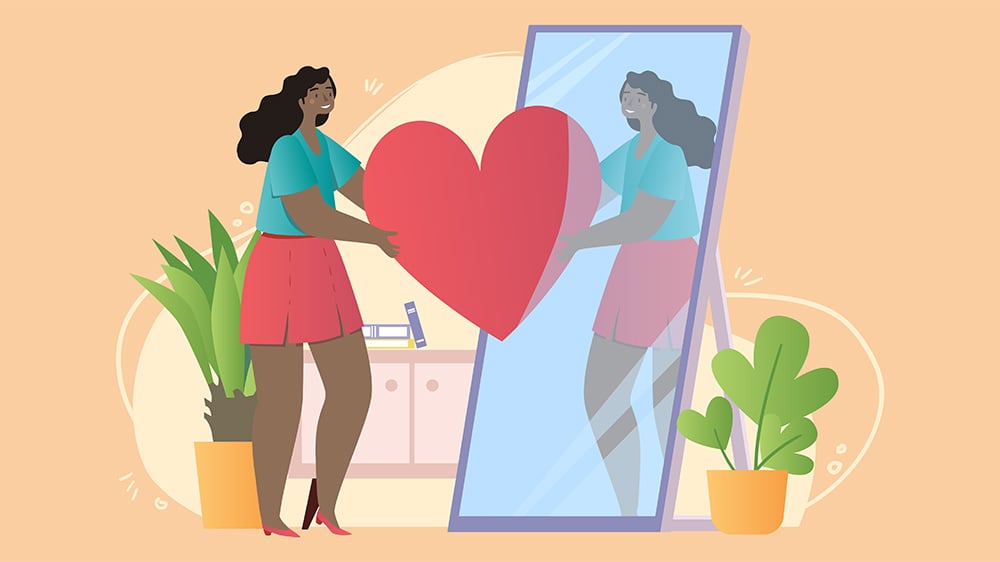Eating Disorders

Do you or someone you know suffer from an eating disorder? According to the National Eating Disorders Association (NEDA), 28.8 million people in the U.S. will struggle with an eating disorder in their lifetime.
This page will provide you with information and resources to help you learn about the different diseases, and specific populations, and guide you or someone you know in the process of recovery and starting to live a fulfilling life! 100% recovery is possible!
*Content on this page was adapted from our former website, Voices4Hope, which was funded by the National Institute on Disability, Independent Living, and Rehabilitation Research (NIDILRR), ACL Grant #90RT5005 (formerly H133B090018) the Learning and Working During the Transition to Adulthood, and the Substance Abuse and Mental Health Services Administration. The Voices4Hope website was created by and for young adults living with a mental health condition to share the Center's work and other relevant information with their peers.
Types of Eating Disorders
Eating disorders are serious but treatable mental and physical illnesses that can affect people of all genders, ages, races, religions, ethnicities, sexual orientations, body shapes, and weights. There is no single cause of an eating disorder. Rather, it is a complex combination of biological, psychological, and sociocultural factors that converge and set off an individual’s predisposed genetic vulnerability.1
There are 9 types of diagnosable eating disorders:
- Anorexia Nervosa
- Bulimia Nervosa
- Binge Eating Disorder
- Avoidant/Restrictive Food Intake Disorder (ARFID)
- Other Specified Feeding or Eating Disorder (OSFED)
- Unspecified Feeding or Eating Disorder (UFED)
- Rumination Disorder
- PICA
- Orthexia
Visit the National Eating Disorders Association (NEDA) to learn more about each type of disorder including diagnostic criteria, warning signs, health consequences, and treatment considerations.
1What are Eating Disorders? National Eating Disorders Association. 21 February 2024. https://www.nationaleatingdisorders.org/what-are-eating-disorders/
Eating Disorder Research
Eating disorders have the second highest mortality rate of any mental health condition (ANAD, http://www.anad.org/), but full recovery is possible and does happen!
Youth & Young Adults:
- 90% of eating disorders are diagnosed before age twenty (www.mentalhelp.net).
- 10% to 20% of female college students and 4% to 10% of college males have eating disorders (Eating for Life Alliance, http://www.eatingforlife.org/). The percentage of college males with eating disorders is said to have increased since this study.
- The percentage of young people with an eating disorder at least doubled due to the COVID-19 pandemic (JAMA Pediatrics).
Special Populations:
- One in three males suffer from an eating disorder (www.nationaleatingdisorders.org).
- 53% of LGBT individuals have been diagnosed with an eating disorder (Journal of Eating Disorders).
- Doctors are far less likely to ask BIPOC patients than white patients about eating disorders (www.anad.org).
- Native American and Latina women are less likely than white women to receive a referral for follow up care, regardless of the severity of symptoms (www.anad.org).
- Up to 50% of people with eating disorders also misuse substances (www.nationaleatingdisorders.org).
Resources
Below are key resources to learn more about eating disorders and find support.
General
- National Eating Disorders Association (NEDA)
- Multi-Service Eating Disorders Association (MEDA)
- National Association of Anorexia Nervosa and Related Disorders (ANAD)
- Beat Eating Disorders
- SAMHSA National Center of Excellence for Eating Disorders (NCEED)
- Office on Women's Health
- National Institute of Mental Health (NIMH)
Books & Blogs
- Eating Disorder Hope: Recommended recovery books and ideas
- Boston Public Library: Curated list of eating disorder and body positivity books
- Gurze Books
- Transitions ACR Young Adult Blog: Who's At Your Table
- Transitions ACR Young Adult Blog: My Worth is More Than My Weight
- Transitions ACR Young Adult Blog: How My Mental Health Crisis Impacted My Health
